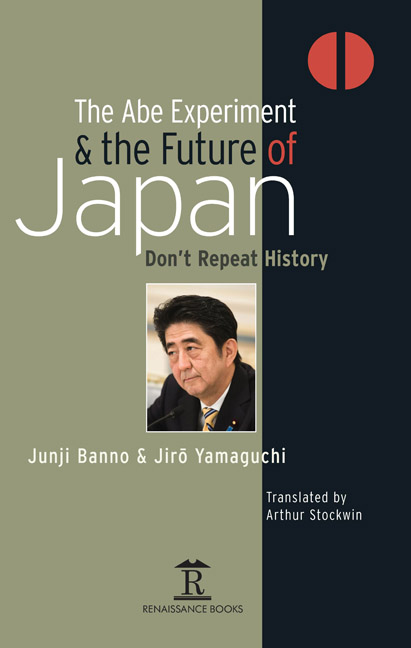Book contents
- Frontmatter
- Contents
- Foreword
- Translator’s Preface
- Conventions
- Chapter 1 Should the Aim be to Prevent Constitutional Revision?
- Chapter 2 Why was Post-war Pacifism Defective?
- Chapter 3 Is there a Political Elite in Japan?
- Chapter 4 Is the Liberal Democratic Party Really Tough?
- Chapter 5 Why Can’t We Tackle Reduction in Inequalities?
- Chapter 6 Where Should Japan Go From Here?
- Afterword
- Index
Chapter 1 - Should the Aim be to Prevent Constitutional Revision?
Published online by Cambridge University Press: 30 April 2022
- Frontmatter
- Contents
- Foreword
- Translator’s Preface
- Conventions
- Chapter 1 Should the Aim be to Prevent Constitutional Revision?
- Chapter 2 Why was Post-war Pacifism Defective?
- Chapter 3 Is there a Political Elite in Japan?
- Chapter 4 Is the Liberal Democratic Party Really Tough?
- Chapter 5 Why Can’t We Tackle Reduction in Inequalities?
- Chapter 6 Where Should Japan Go From Here?
- Afterword
- Index
Summary
FROM A LETTER WRITTEN FOUR YEARS AGO
Yamaguchi. In April 2010 you sent me a letter, which summarized your most strongly felt views on the politics of our country, and the relevance of history to an understanding of what is happening today. The letter was written after the long reign of the Liberal Democratic Party (LDP) had been ended in the general election of August 2009, which ushered in a new government led by the Democratic Party of Japan (DPJ). By the time your letter was written, however, the DPJ Government under its first Prime Minister, Hatoyama Yukio, was already running out of steam. I have often pondered why changes of government from one party to another take place so rarely in Japan, and why the DPJ-led Government largely failed in its mission, but in your letter you tackle the issue head on.
Banno. Really? I don't remember what I Wrote.
Yamaguchi. Let me summarize the main points in your letter
1. You support Mr Sengoku Yoshito (a senior minister in the Hatoyama Government),in his advocacy of ‘moderate welfare and moderate burdens’ – a view based on his deep understanding of social democracy in Europe.
2. As you point out, the Extraordinary Commission for the 21st Century, without expressing its own position, only talks about procedural democracy, so for the past two years you have been keeping your distance from them.
3. Your recent position is reminiscent of the old ‘two-stage revolution’ position. In 1913 the first constitutional defence movement was founded, as well as the Rikken Dōshikai (later Dōshikai), which became the principal party of opposition, and in the general election of 1915 the Dōshikai of Katō Takaaki defeated the dominant Rikken Seiyūkai and took power. But the subsequent three-party Cabinet, which included the Dōshikai, left office in October 1916 without fulfilling its ideas or its policies. Katō Takaaki made a speech in which he spoke of ‘regular procedures of constitutional government’ (kensei no jodo), asserting the right of tha majority party leaders to form cabinets ‘as a regular procedure’. From this time on the main opposition party (now called Kenseikai) had to face ‘ten years of fidelity in adversity’ (kusetsu jūnen).
- Type
- Chapter
- Information
- The Abe Experiment and the Future of JapanDon't Repeat History, pp. 1 - 26Publisher: Amsterdam University PressPrint publication year: 2016



